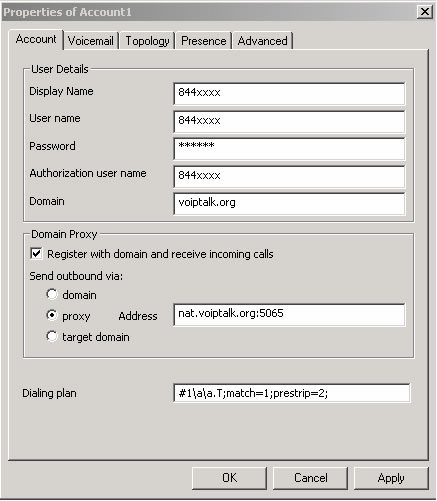

- #ALLWORX XLITE SOFTPHONE SETUP HOW TO#
- #ALLWORX XLITE SOFTPHONE SETUP INSTALL#
- #ALLWORX XLITE SOFTPHONE SETUP PASSWORD#
- #ALLWORX XLITE SOFTPHONE SETUP DOWNLOAD#
- #ALLWORX XLITE SOFTPHONE SETUP FREE#

#ALLWORX XLITE SOFTPHONE SETUP FREE#
The free X-Lite doesn’t support G.729 or other CODEC. You will want to make sure that if you are using regions, to keep everything G.711. I like to stick my softphones in a separate bucket.


#ALLWORX XLITE SOFTPHONE SETUP PASSWORD#
NOTE: In the X-Lite configuration examples I have seen, it is suggested that you specify the password This means that a client can connect by simply providing the extension number and a user ID. If you go with the standard SIP security profile, digest authentication is not used. I don’t, so we are going to create a SIP security profile that forces the use of Digest Authentication. I suppose you could consider this an optional step if you don’t mind SIP endpoints just registering to your CUCM cluster without a password. You will need to make some associations between the two and perform some other ancillary activities in preparation. In CUCM you will need to create a SIP device and a user object. I like to get the station configured in CUCM before I start playing around with the client.
#ALLWORX XLITE SOFTPHONE SETUP INSTALL#
The install is pretty straight forward and relatively quick.
#ALLWORX XLITE SOFTPHONE SETUP DOWNLOAD#
I suspect that procedures for 6.0 to 7.1 would be near identical.įirst, you will need to download the X-Lite application here. From looking at some of the examples on line (dating back to CUCM 5.0), the basic configuration we are going to discuss is pretty applicable to all CUCM appliance models. I like X-Lite, so I am using it as the example.įor my testing I used CUCM 7.0-1 (that is 7.1(3b)SU1 for the uninitiated).
#ALLWORX XLITE SOFTPHONE SETUP HOW TO#
But, I hope to provide some examples to give you a better feel for how to add 3rd Party SIP endpoints to the CUCM. Every one of us has a slightly different environment that we operate in. I ask you, what am I supposed to do with that if I try to deploy this application in the real world? Now, I am not saying that I am going to cover all bases adequately in this example. The examples would have things like this: Second, the resources I have found on-line, including CouterPath’s own write up (which is a bit dated) and an article on Cisco’s “community” collaboration site, were just too light on details. X-Lite seemed like a reasonable choice as it was free and apparently pretty popular. First, I just wanted to add some 3rd party SIP phones to CUCM to start testing feature behaviors.


 0 kommentar(er)
0 kommentar(er)
